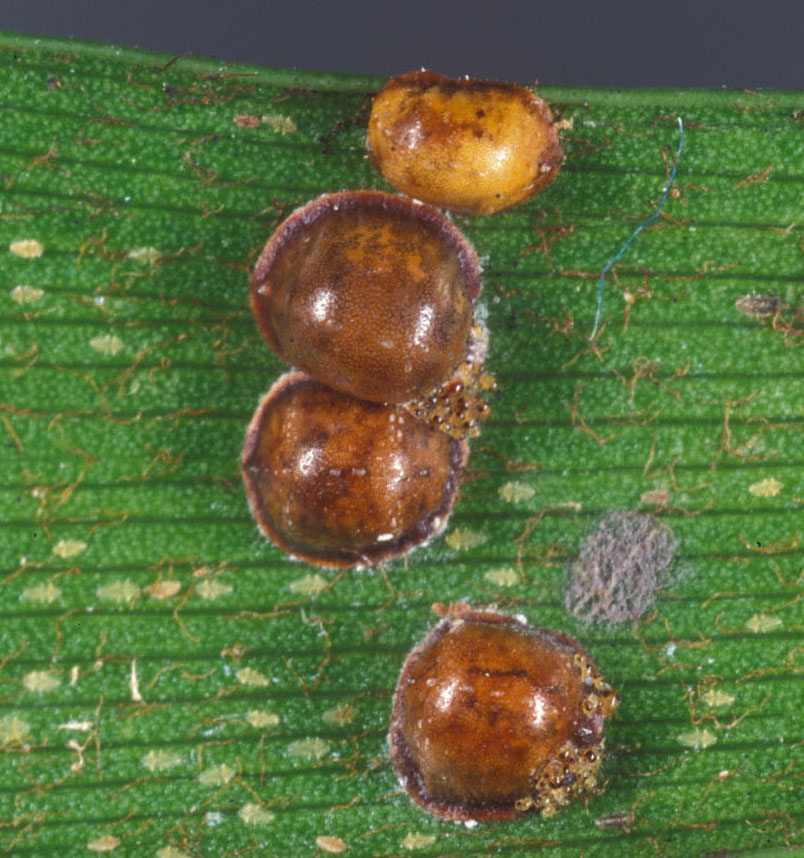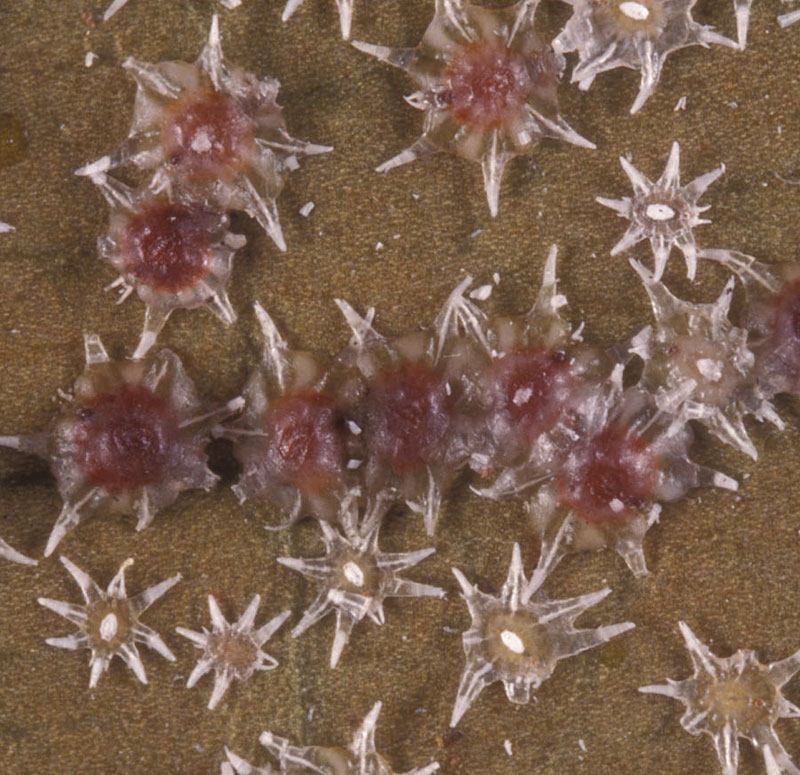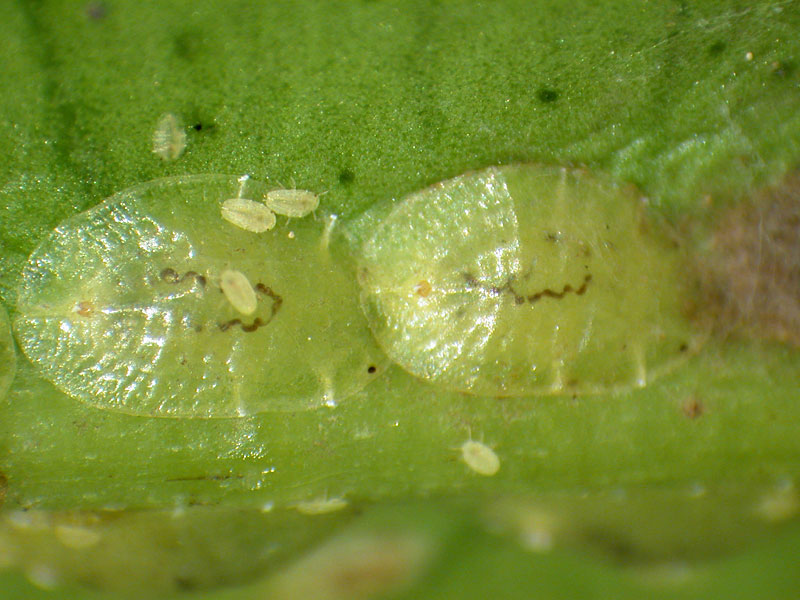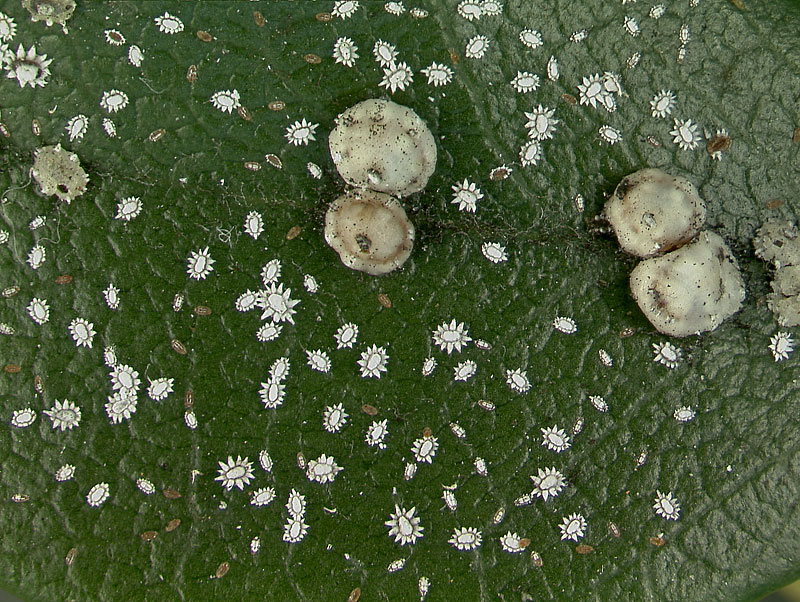Soft Scales
|
tessellated scale, Eucalymnatus tessellatus, adult female; Photo by P.M. Choate, University of Florida |
|
hemispherical scale, Saissetia coffeae, adult females; Photo by Lyle Buss, University of Florida |
|
stellate scale, Vinsonia stellifera, adult females and nymphs; Photo by Lyle Buss, University of Florida |
|
green scale, Coccus viridis, adult females and crawlers; Photo by Lyle Buss, University of Florida |
|
Florida wax scale, Ceroplastes floridensis, adult females, nymphs, and crawlers; Photo by Lyle Buss, University of Florida |
Rank & taxon
Family Coccidae
Description
Adult female soft scale insects may range in size from 3-12.5 mm and their body form, shape, and color can vary widely within the family. Soft scale insects are legless, wingless, and sessile. Their body can be hard and smooth or covered with wax. The protective covering is an integral part of the body and cannot be removed. The first instarinstar:
stage in an insect's life history between any two molts. The newly hatched insect is the first instar, and the adult (imago) is the final instar.
, or crawler, is usually the most mobile stage, with well-developed, proportional legs and antennae.
Distribution
Worldwide; 153 genera, representing over 1,000 described species
Biology/life cycle
Life cycles vary among species. Soft scales have a number of reproductive strategies, including parthenogenesisparthenogenesis:
the production of offspring without mating - eggs develop normally without being fertilized
and hermaphroditism. Females may lay eggs or give birth to live young. The female lays her eggs underneath her waxy covering, where they remain for 2-3 weels until they hatch. The first instarinstar:
stage in an insect's life history between any two molts. The newly hatched insect is the first instar, and the adult (imago) is the final instar.
, or crawler stage, moves around the plant until it finds a suitable feeding site. Females undergo simple metamorphosis with 3 to 4 instars and no pupa-like stage, while males have 5 instars, complete metamorphosis, and two pupa-like instars during which they do not feed. Life histories vary widely within the family. In the United States, many species have only one generation per year, though it is not uncommon to see 2 generations per year. In a greenhouse or tropical setting, some species may have up to 6 generations per year.
Hosts
Palms: a wide variety of palms
Other: a wide variety of woody and herbaceous plants
Representative taxa on palms
Ceroplastes floridensis (Florida wax scale) sometimes occurs in dense enough populations in nurseries or greenhouses to be of concern.
Eucalymnatus tessellatus (tessellated scale), a small, flat, brown scale insect, can be a serious pest of palms in landscape situations, a condition rare among soft scales.
Vinsonia stellifera (stellate scale), a star-shaped scale, can sometimes be seen on coconut palm foliage but not usually in high enough numbers to be considered a pest.
Additional comments
Soft scales secrete honeydewhoneydew:
the sticky, sweet secretion produced by sap-feeding bugs
, which supports sooty mold growth, so soft scale infestations are often accompanied by sooty mold. They may also be tended by ants. Soft scales may be found on all parts of the plant but are most commonly found on leaves and stems. Definitive species identification in soft scales is usually based on microscopic characters from a slide-mounted adult female and should be done by an expert.







